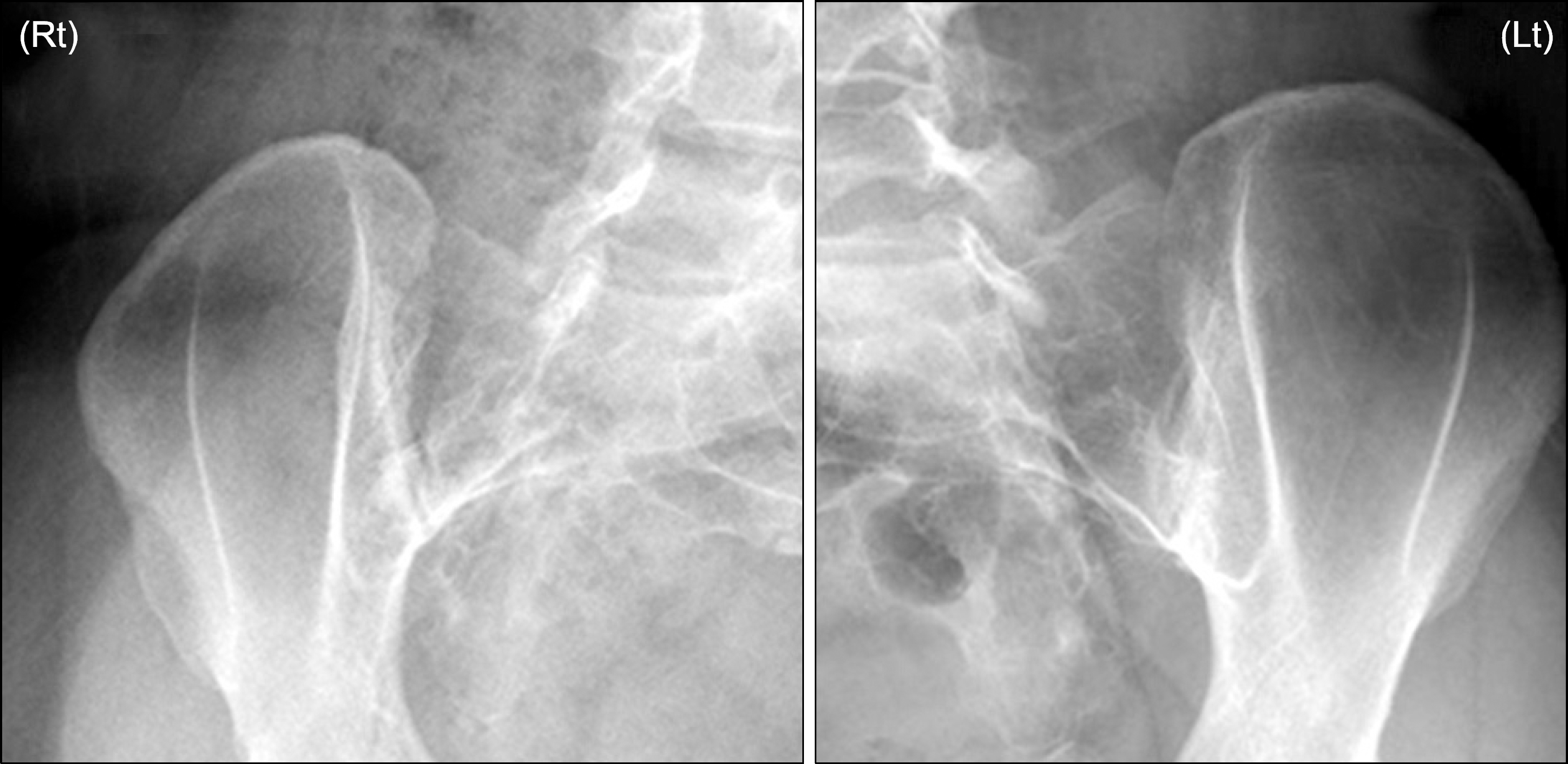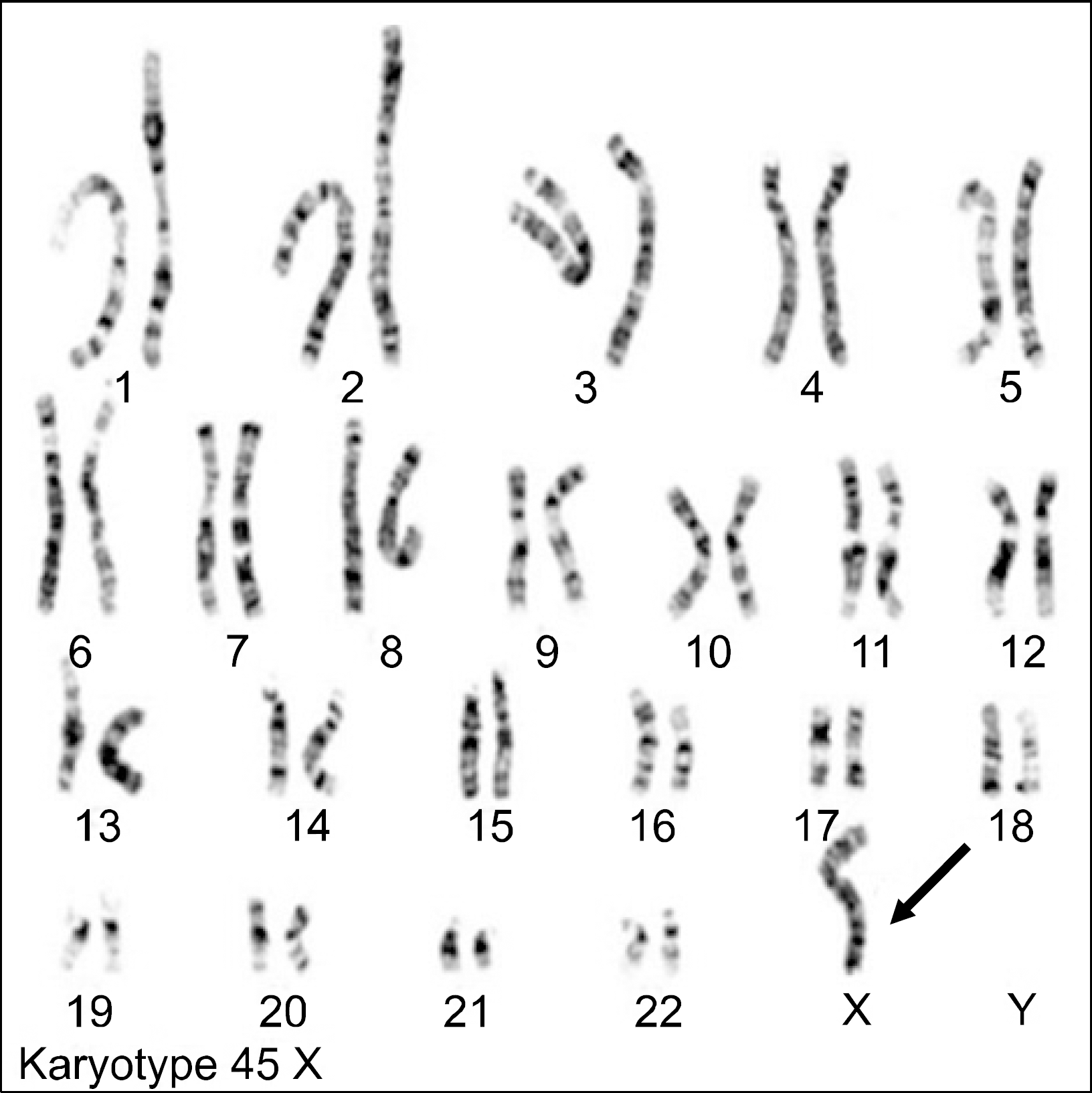Abstract
Turner's syndrome (TS) is a chromosomal disorder where phenotypic females have either a missing chromosome (45 XO) or a structural aberration in one of the chromosomes. Previous studies have suggested that women with TS may be at increased risk of several autoimmune diseases, such as Hashimoto thyroiditis, celiac disease, Crohn's disease, ulcerative colitis, juvenile rheumatoid arthritis, and vitiligo. Although a high risk has been documented for autoimmune diseases in TS, there is only one case reporting the relationship between TS and ankylosing spondylitis (AS) in the literature. Herein, we present an unusual case of AS associated with TS.
Go to : 
References
1. Turner HH. A syndrome of infantilism, congenital web-bed neck, and cubitus valgus. Endocrinol. 1938; 23:566–74.
2. Jacobs PA, Browne C, Gregson N, Joyce C, White H. Estimates of the frequency of chromosome abnormalities detectable in unselected newborns using moderate levels of banding. J Med Genet. 1992; 29:103–8.

3. Elsheikh M, Dunger DB, Conway GS, Wass JA. Turner's syndrome in adulthood. Endocr Rev. 2002; 23:120–40.

4. J⊘rgensen KT, Rostgaard K, Bache I, Biggar RJ, Nielsen NM, Tommerup N, et al. Autoimmune diseases in women with Turner's syndrome. Arthritis Rheum. 2010; 62:658–66.
5. Cockwell A, MacKenzie M, Youings S, Jacobs P. A cyto-genetic and molecular study of a series of 45,X fetuses and their parents. J Med Genet. 1991; 28:151–5.

7. Armagan O, Ekim A, Dinc A, Oner C. Ankylosing spondylitis in a patient with Turner syndrome: a case report. Rheumatol Int. 2007; 27:1177–80.

8. Invernizzi P, Miozzo M, Selmi C, Persani L, Battezzati PM, Zuin M, et al. X chromosome monosomy: a common mechanism for autoimmune diseases. J Immunol. 2005; 175:575–8.

9. Mortensen KH, Cleemann L, Hjerrild BE, Nexo E, Locht H, Jeppesen EM, et al. Increased prevalence of autoimmunity in Turner syndrome-influence of age. Clin Exp Immunol. 2009; 156:205–10.
10. Gravholt CH, Hjerrild BE, Mosekilde L, Hansen TK, Rasmussen LM, Frystyk J, et al. Body composition is dis-tinctly altered in Turner syndrome: relations to glucose metabolism, circulating adipokines, and endothelial adhesion molecules. Eur J Endocrinol. 2006; 155:583–92.

11. Larizza D, Calcaterra V, Martinetti M. Autoimmune stig-mata in Turner syndrome: when lacks an X chromosome. J Autoimmun. 2009; 33:25–30.

12. Lee SJ, Seo SR, Lee HJ, Lee KE, Kim TJ, Park YW, et al. A case of rheumatoid arthritis associated with Turner's syndrome. J Korean Rheum Assoc. 2010; 17:173–6.

13. Güler-Uysal F, Kozanoglu E, Sur S, Göncü K. Spondy-loarthropathy and Turner's syndrome. Clin Exp Rheumatol. 2001; 19:232–3.
Go to : 
 | Figure 2.Oblique views of sacroiliac joints show minimal subcortical erosions, subchondral sclerosis, and indistinctness of joint space at the bilateral sacroiliac joint. |
 | Figure 3.(A) Oblique coronal T2-weighted magnetic resonance image (MRI) shows multiple subcortical erosions, joint space widening in the right sacroiliac joint (white arrows) and bone marrow edema in the left sacroiliac joint (black arrow). (B) Oblique coronal fat-suppressed T2-weighted MRI shows an irregular margin, and subchondral sclerosis in the bilateral sacroiliac joints (black arrows). |




 PDF
PDF ePub
ePub Citation
Citation Print
Print



 XML Download
XML Download